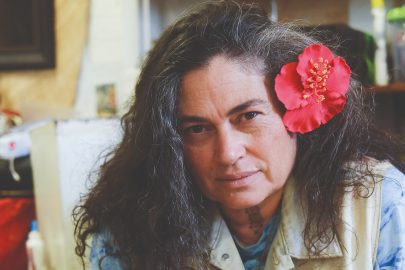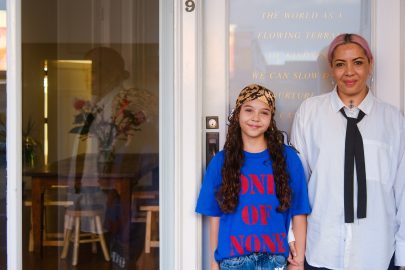Jun 15, 2017 Art
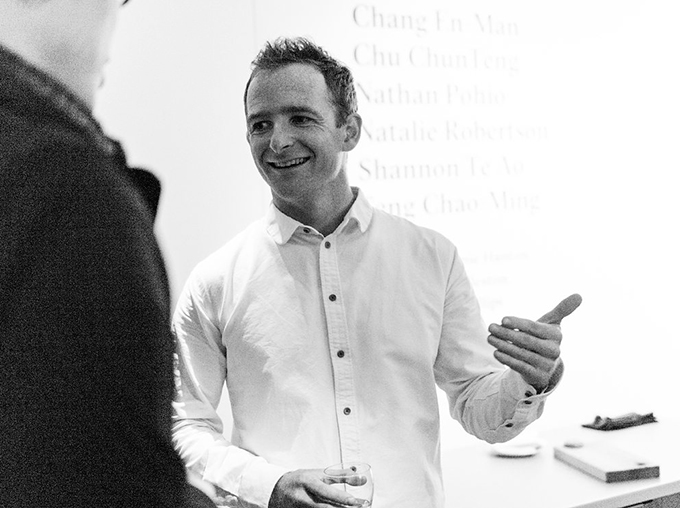
After more than seven years at Te Tuhi, Bruce Phillips has moved on, leaving the Pakuranga institution in excellent shape.
The meal — complemented with chop suey, taro and beans — was to mark the opening of ’Uhila’s exhibition Pigs in the Yard II, the latest event in his relationship with Te Tuhi, and with Phillips. They first worked together in 2012, when ’Uhila staged Mo’ui tukuhausia, a performance in which he lived homeless around Te Tuhi for a fortnight. The work was so powerful it was nominated for the 2014 Walters Prize, for which ’Uhila famously extended the original action, living homeless around central Auckland for three months.
“It was his real desire to connect and understand what it’s like [to be homeless],” Phillips says of ’Uhila’s work. “A lot of us artists and curators come from middle-class backgrounds, and we have very liberal and lofty ideas about what art can provide to society. But we don’t always take the time to actually try to walk in someone else’s shoes and see things from another perspective.”
It was an enormous test for Te Tuhi, which involved huge amounts of planning and consultation with community groups, local businesses and police. It also laid an early marker for Phillips’ seven-year tenure at the Pakuranga institution: a blending of cutting-edge contemporary art and community action.
Phillips is one of the quiet guys of the New Zealand art scene: slight, soft-spoken, quietly thoughtful. But that hasn’t stopped him from making sure Te Tuhi is up there with our edgiest galleries. And he’s never given in to the urge to simply reflect the tastes of Pakuranga’s relatively affluent base. “One of the great things I’ve learned at Te Tuhi is how specific, complex and challenging the notions of public and community are,” he says.
Like Artspace, Te Tuhi is an independent charitable trust, which, Phillips explains, “allows us to take on projects with a certain amount of calculated risk. We’re mindful of being accessible, but also of supporting artists. At least half of our programme is new work. And often, it’s a big break for artists. We pour in our meagre resources to help the artists reach a new level in their career.”
The track record is pretty exceptional. ’Uhila made the 2014 Walters Prize shortlist. The winner of the 2016 Walters, Shannon Te Ao, also has very strong connections with Te Tuhi and Phillips. More recently, Phillips has given space to talented emerging artists like Charlotte Drayton, Hannah Valentine, Yona Lee and Talia Smith. Te Tuhi also awards the no-strings-attached $5000 Iris Fisher Scholarship every year to an artist enrolled in a postgraduate art degree. And its “Project Wall” and annual billboard project on Reeves Rd are crucial testing sites for young artists.
Under Phillips’ curatorial direction, Te Tuhi hasn’t just reflected its local community but built new, diverse ones within the art world, in ways similar venues — with the exception of Artspace under Misal Adnan Yildiz — struggle to do. It’s never become insular, and it’s never shied away from exploring some of contemporary Auckland’s defining questions, particularly around race, class and property.
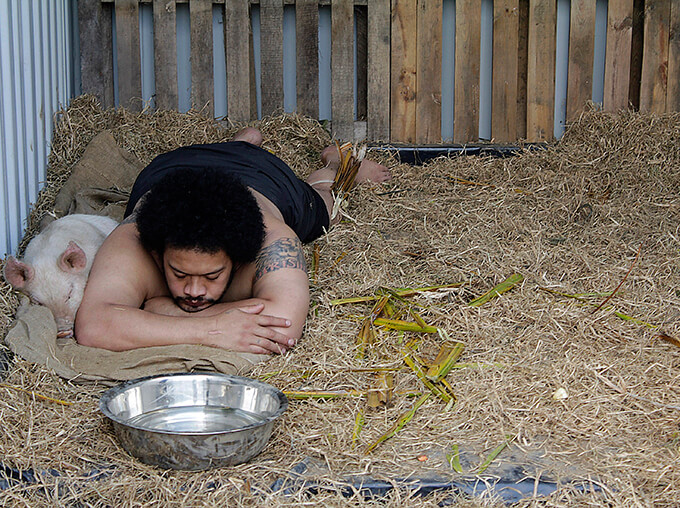
Arguably the biggest test of this was in 2012, when Phillips curated a group exhibition called Between Memory and Trace. Its centrepiece was a work by the relatively unknown young Aucklander Luke Willis Thompson (two years later, Thompson would beat ’Uhila for the 2014 Walters Prize), which consisted of three garage roller doors. The sculpture sounds innocuous enough. Except the doors were the same ones that had been tagged by the teenager Pihema Cameron in 2008. Not long after the boy had marked the doors, he was dead: the owner of the property, Bruce Emery, saw Cameron and his friend vandalising his property and pursued them with a knife. Emery was convicted of Cameron’s manslaughter.
“I remember debating the incident with a family member,” Phillips says, “and it struck me how deeply dehumanisation can occur. It’s an issue that’s so pertinent now, with everything that’s going in the States, and the ways people become silenced and objectified. People can vanish because they’re labelled a certain way. So I understood the potential potency of Luke’s work.”
As much as Thompson’s piece was the doors themselves, Phillips explains that “Luke was really interested in the transaction — that a public organisation like Te Tuhi would obtain these doors for a fee, and that would in some way speed up renovations on the property. So it would be a means of saving this trace and enabling things to move on, rather than being an open wound. People still debate [Thompson’s action], and I think that’s what makes it really interesting.”
Phillips has never shied away from controversial projects such as Thompson’s, saying that he “gravitates towards the more challenging works to resolve, both institutionally and in what implications it has for contemporary art”. He’s also produced international projects with the likes of African-American artist William Pope.L, who staged a theatrical piece that explored the connections between questions of racism in America and New Zealand, and a large-scale video installation by the ferociously anti-capitalist Spanish artist Santiago Sierra.
For now, Phillips is based in Wellington, where he plans to take some time out for research and writing. He’s left a big hole behind him. He won’t be out of the action long, though: his next major project is to curate the visual arts component of New Zealand’s presence at the Edinburgh International Festival later this year. It’ll be a new commission by a New Zealand artist, which he describes as “complex, and multi-faceted, and poetic”. Despite every effort on my part, he stays completely committed to Creative New Zealand’s press embargo. “I just wish I could talk about, but I can’t,” he says, laughing.
That’s how Phillips is: when it’s announced, he’ll no doubt let the artist take the limelight, and make things happen behind the scenes. Contemporary art curators are often a bombastic lot. But Phillips shows that sometimes, it’s the quiet ones you have to watch.
This is published in the May – June 2017 issue of Metro.
Get Metro delivered to your inbox
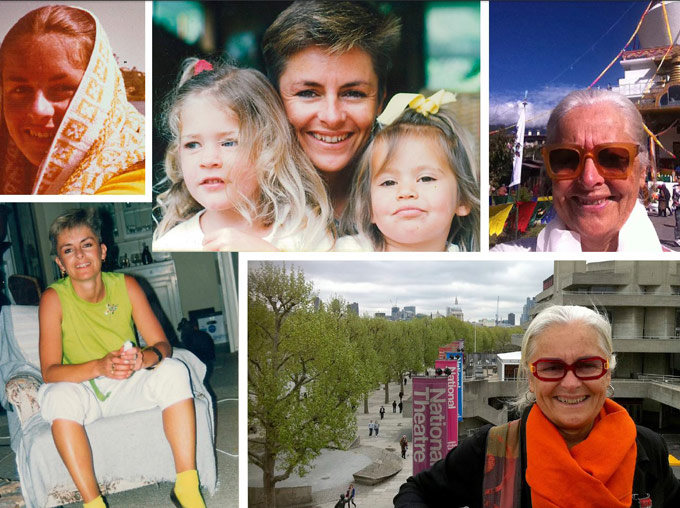
/MetromagnzL @Metromagnz @Metromagnz


